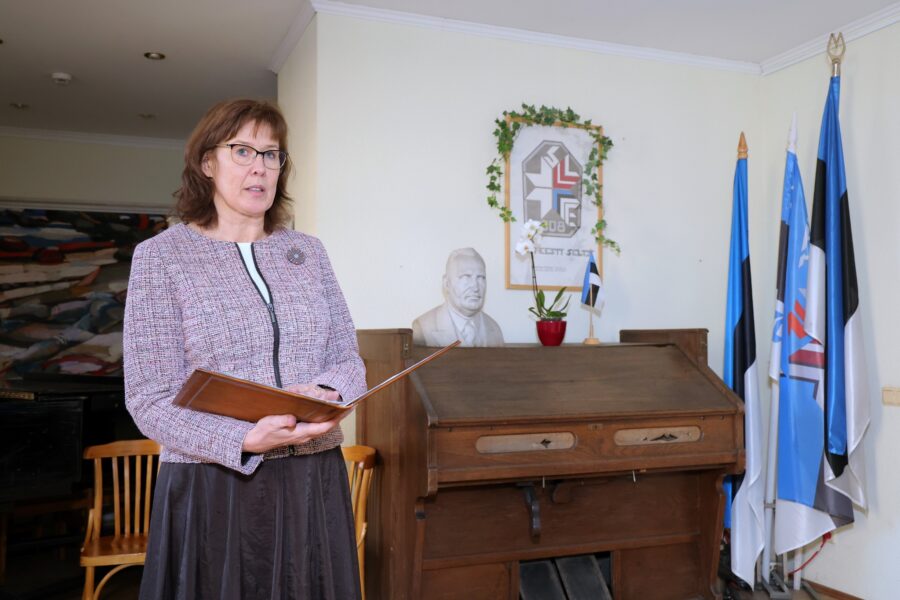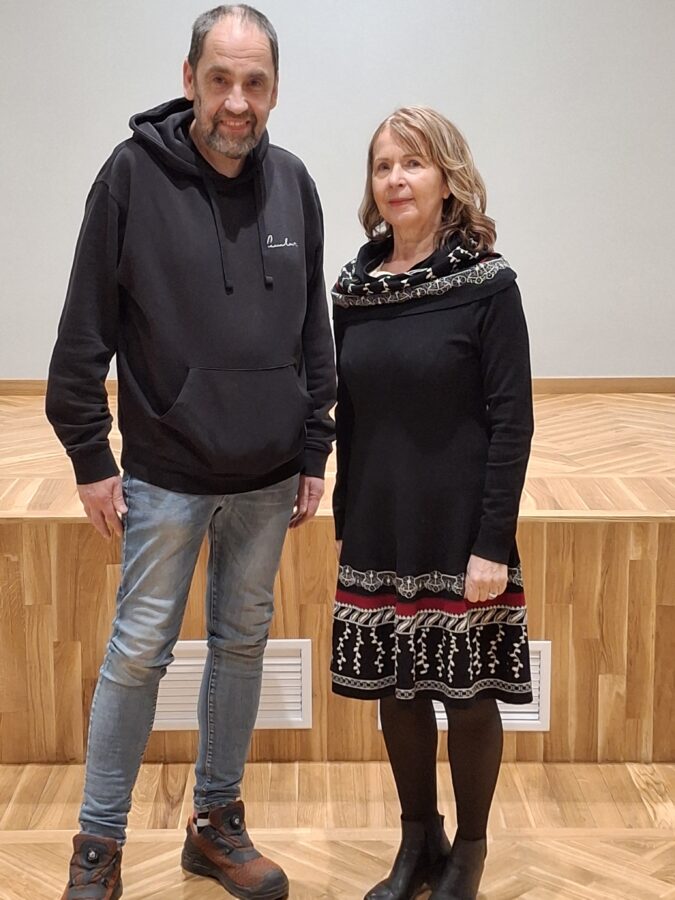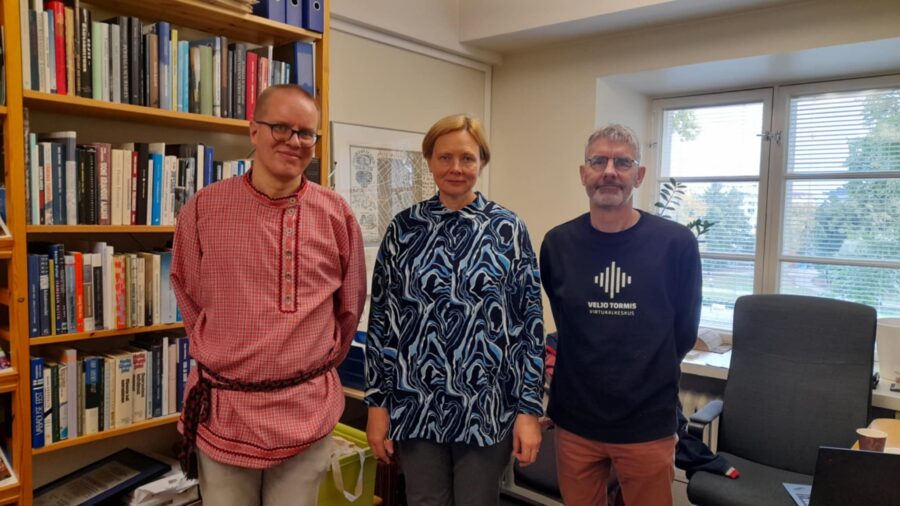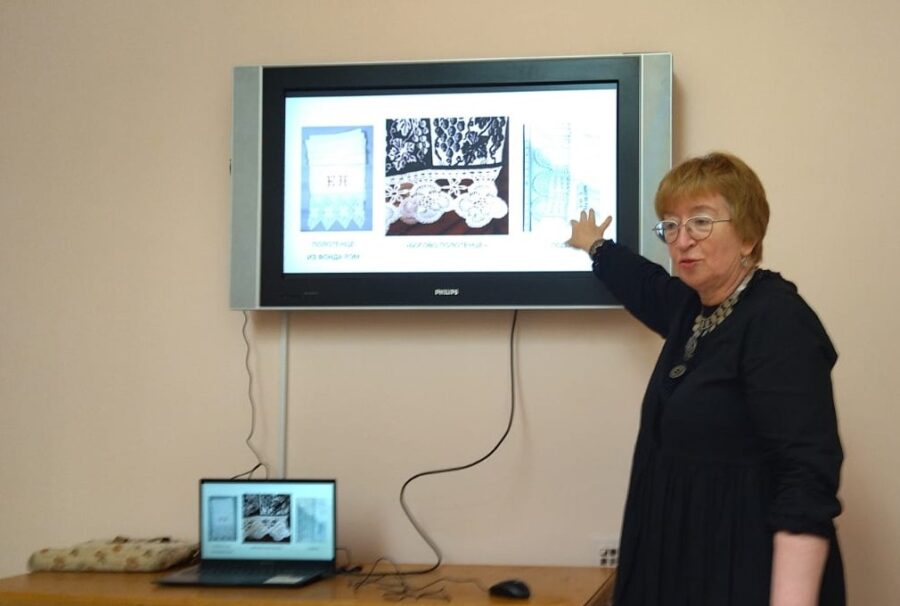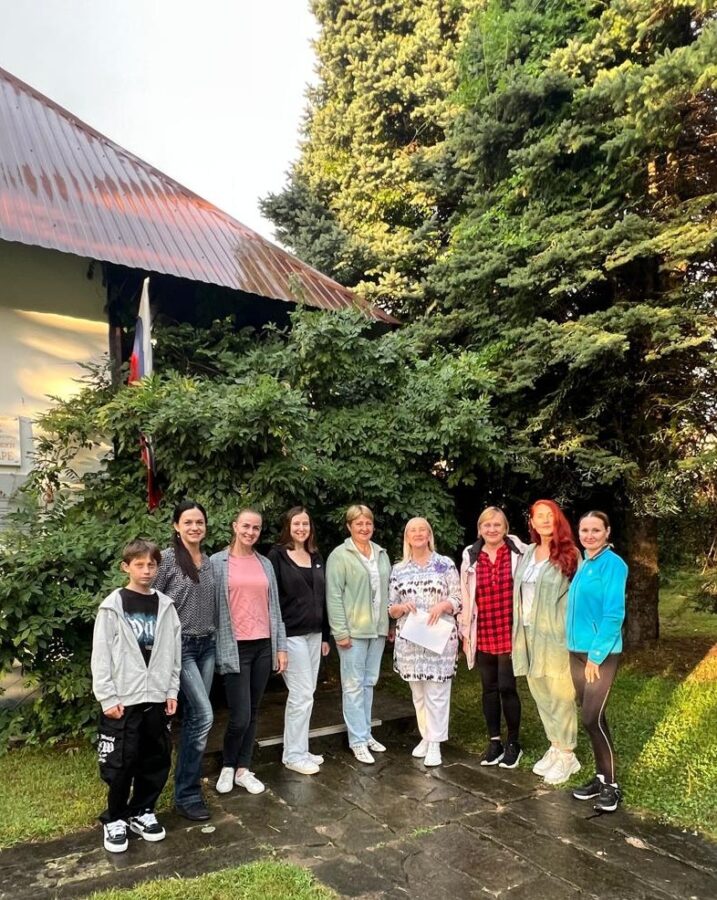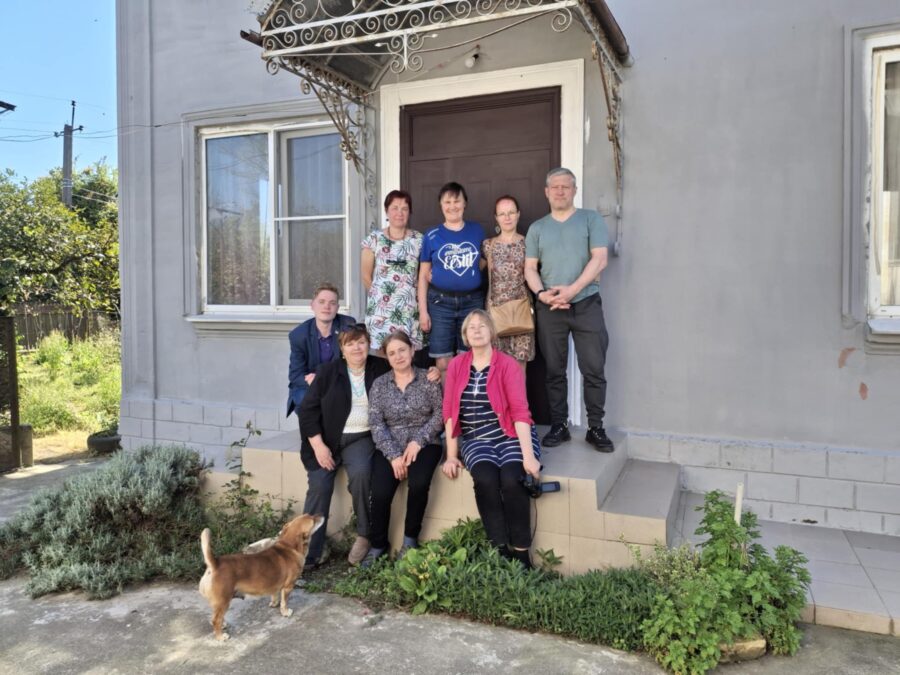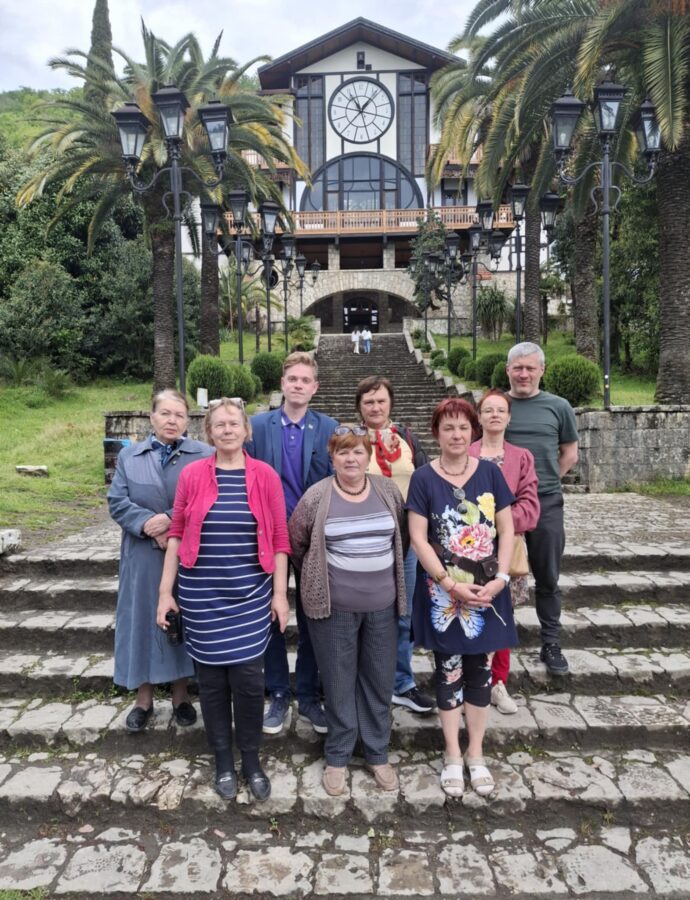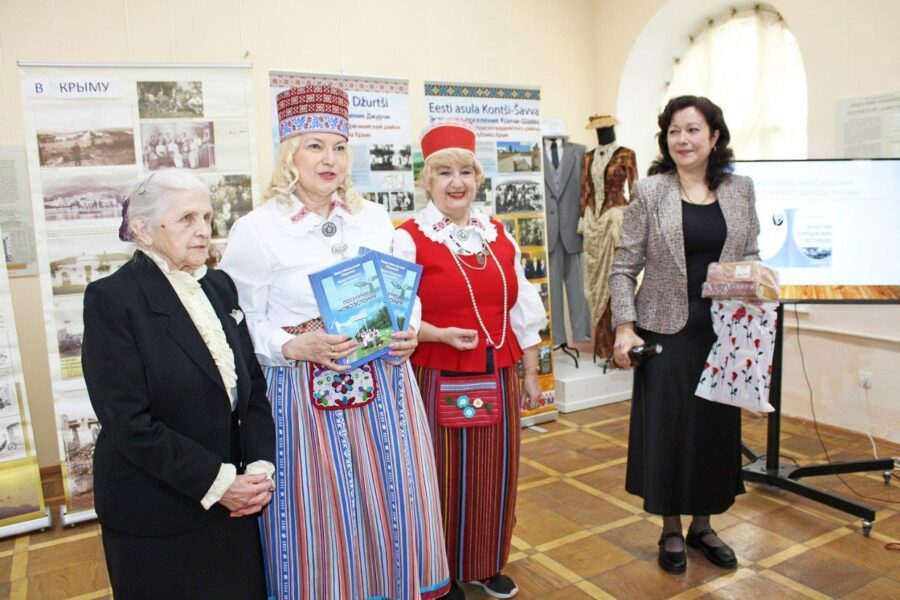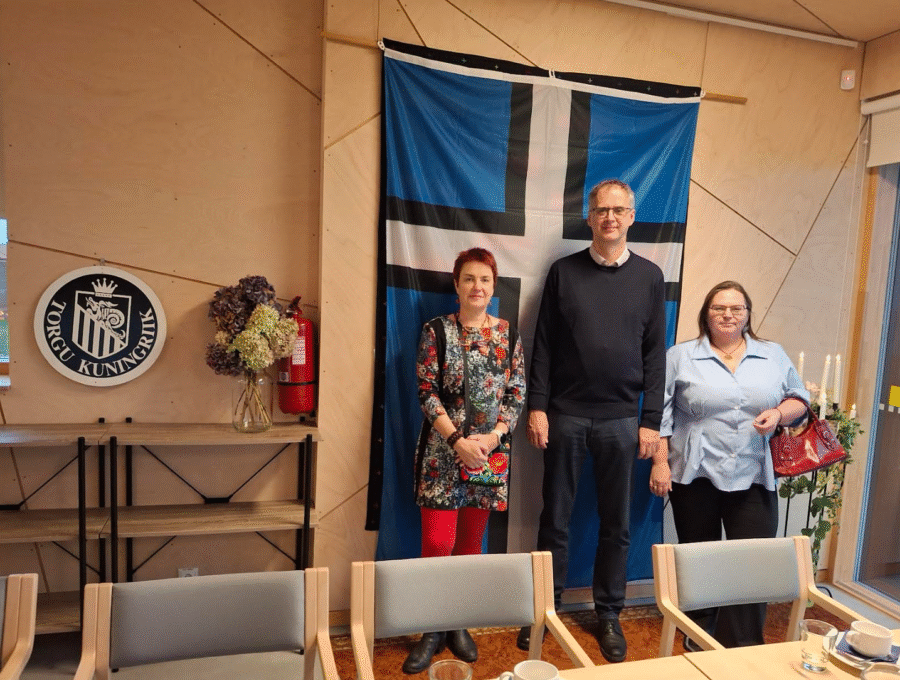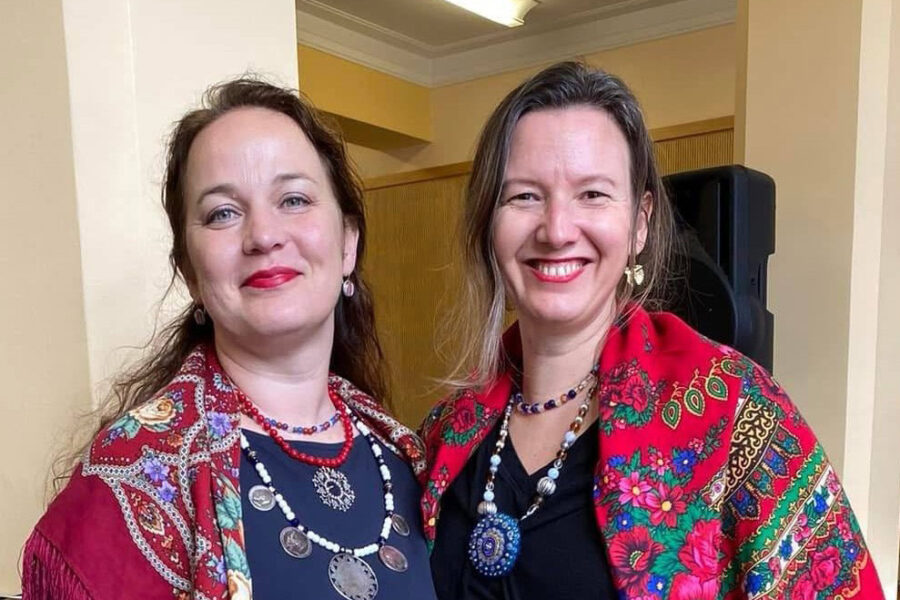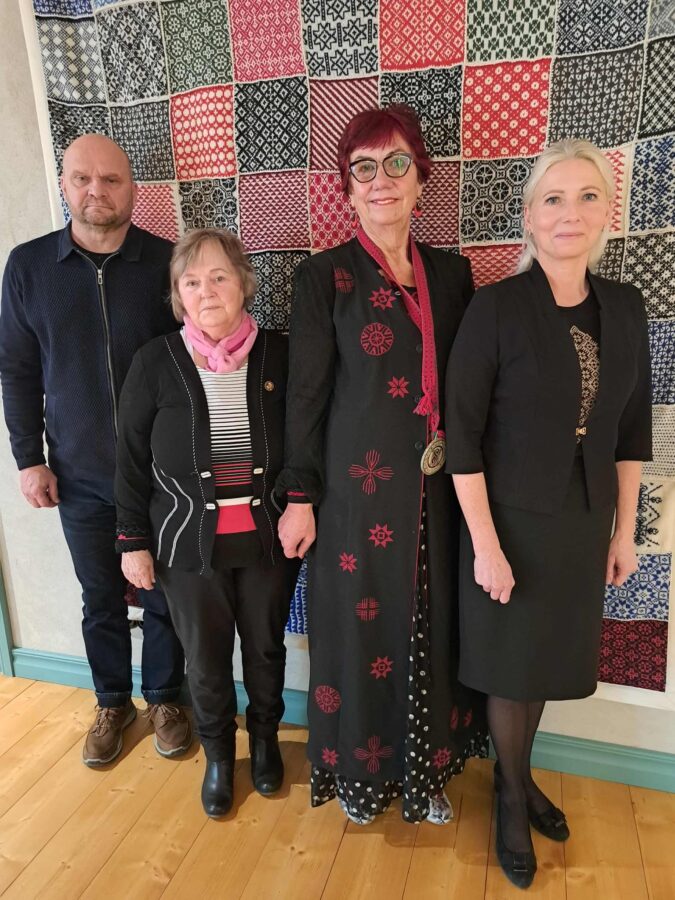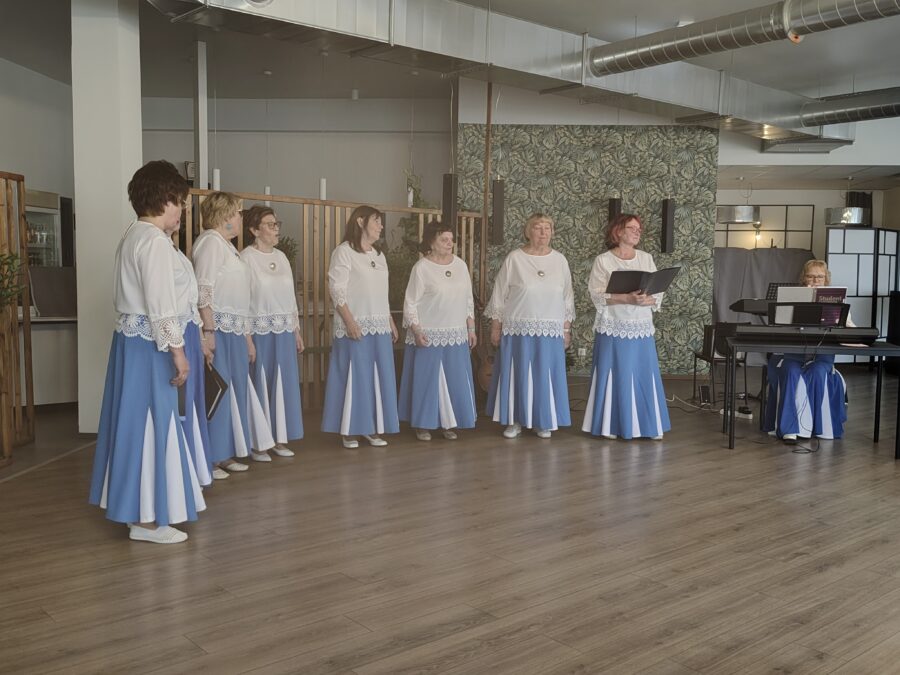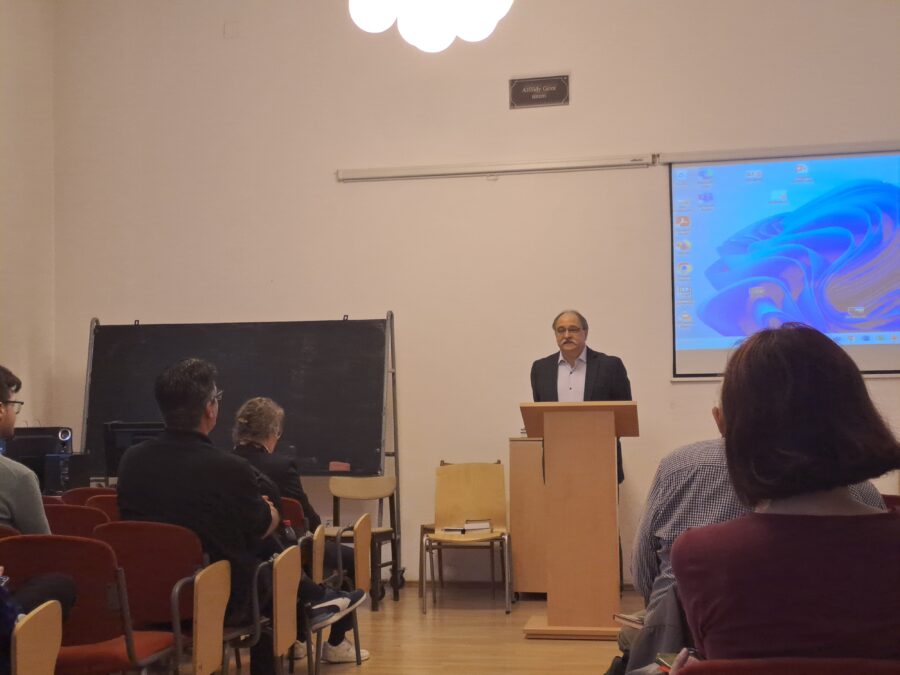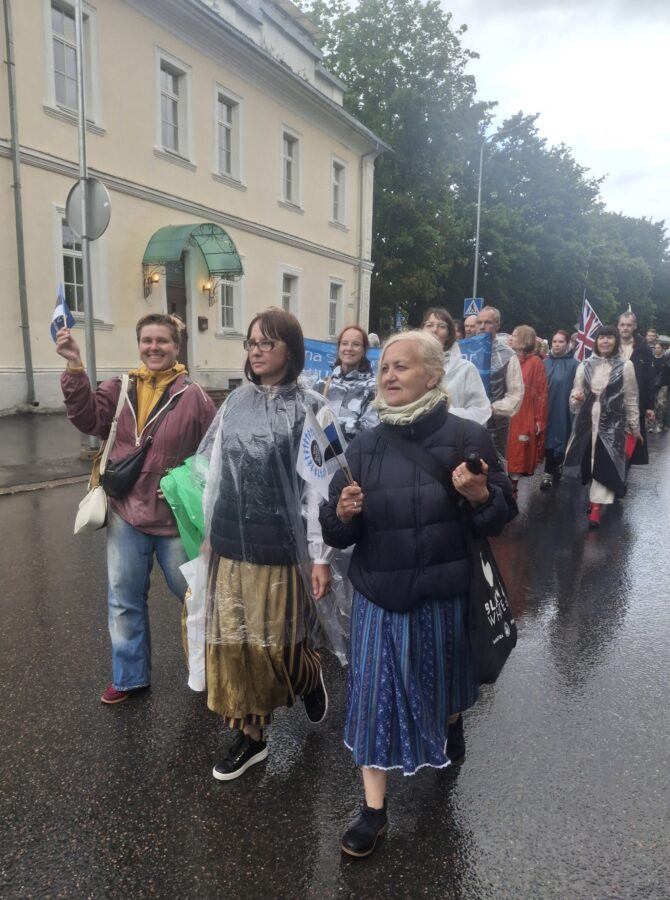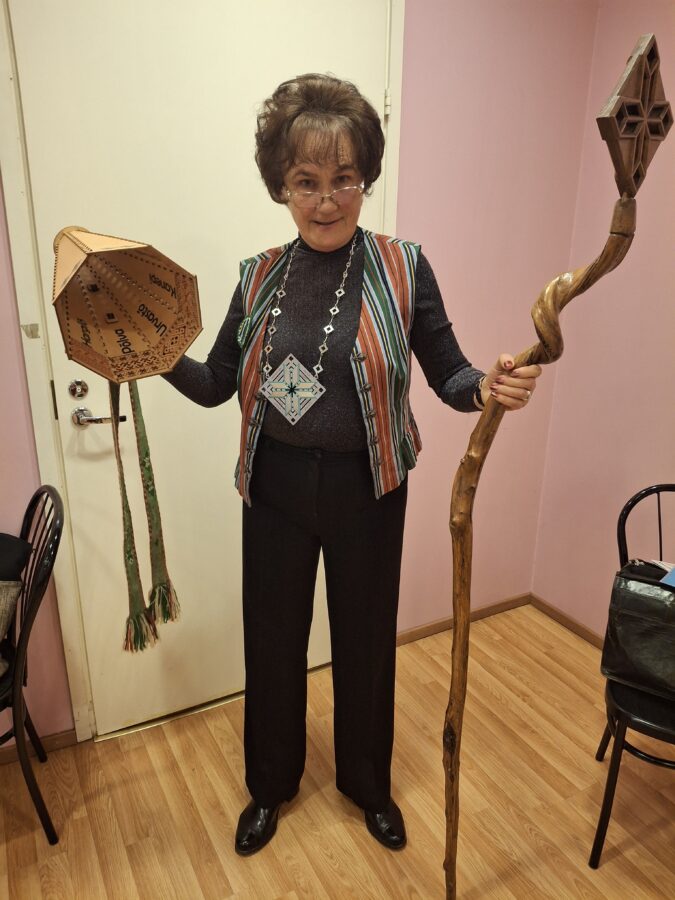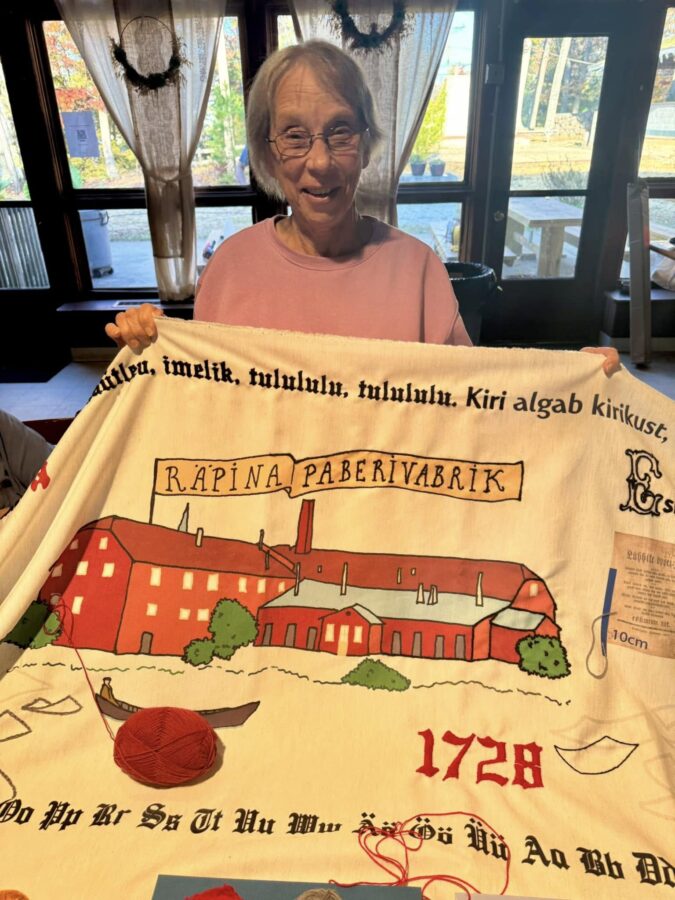THE BYLAWS OF
THE ASSOCIATION OF ESTONIAN CULTURAL SOCIETIES
The Bylaws of the Association of Estonian Cultural Societies (hereinafter ”the Association”) were approved by the establishing treaty on 14 March, 1997. Bylaws were amended by the decision of the General Assembly on 20 June, 2020.
1. Name, Location, Purpose and Fiscal Year of the Association
1.1. The official name of the Association is Eesti Kultuuriseltside Ühendus (abbreviated EKSÜ) in Estonian, the Association of Estonian Cultural Societies in English, and Ассоциация Kultur Oбществ Эстонии in Russian.
1.2. The Association location is the town of Tartu, Republic of Estonia.
1.3. The purpose of the activities of the Association is to promote the advancement of Estonian societies as well as national culture, spirituality and education.
1.4. The fiscal year of the Association corresponds to the calendar year.
1.5. The Association is established for an indefinite period.
2. Practice Procedures
2.1. In order to achieve its operational objectives, the Association:
2.1.1. organizes seminars on science, art, literature and music; conferences, exhibitions, concerts, competitions, and other events;
2.1.2. collects and transmits cultural information to the members of the Association;
2.1.3. publishes books, and other publications;
2.1.4. organizes events, exhibition sales and fundraisers;
2.1.5. awards scholarships, prizes, grants;
2.1.6. establishes a recognition procedure for outstanding achievement
2.1.7. cooperates with associations, local governments and other institutions;
2.1.8. participates in the development of civil society structures and national cultural policy as well as implements and develops other activities that are not inconsistent with the Bylaws of the Association and existing legislation;
2.1.9 collects, organizes, analyzes and disseminates information about the activities of the Association;
2.1.10 advises members of the societies;
2.1.11 develops and strengthens global cooperation networks of Estonian societies as well as finds new ways of cooperation;
2.1.12 helps to ensure the sustainability of the advancement of Estonian societies by systematically involving children and young people in the activities of the societies.
3. Conditions and Procedure of Admission to, Withdrawal from and Expulsion from the Association
3.1. Admission to membership of the Association may be applied for by an officially registered cultural society (non-profit organisation), which submits its registered bylaws and written application to Association Board stating the wish to develop their activities in accordance with the objectives of the Association and complying with the Bylaws of the Association.
3.2. Admission to the Association is decided by the Association Board.
3.3. In order to withdraw from the Association, a member submits a written application to the Association Board together with minutes of the relevant general meeting. The Board shall remove the society wishing to resign from the list of members within two months.
3.4. A member of the Association may be expelled from the Association by a decision of the Board in case of
3.4.1. failing to pay the membership fee by the end of the Association fiscal year;
3.4.2. failing to participate in the General Assembly or any event organized by the Association in two years;
3.4.3. significantly harming the Association by member’s actions or inaction.
3.5. The expulsion of a member of the Association is decided by the Association Board, discussing the matter at a meeting, while notifying the expelled member of expulsion, in writing, at least two weeks prior to said meeting. Member shall have the option to participate in the discussion regarding exclusion. The decision about expelling a member is reached, if more than half of the Board members are in favour.
3.6. A member expelled by the decision of the Board has a right to request that the matter of expulsion will be decided by the General Assembly of the Association.
3.7. The membership fee will not be refunded upon leaving the Association.
3.8. A member organization of the Association is represented in the General Assembly and in the bodies of the Association by the chairperson or member of its board or by an authorized representative of another member society of the Association.
3.9. Each member organization of the Association has one vote in the decision making (voting) independent of the number of representatives present.
4. Rights and Obligations of Members
4.1. A member of the Association has the right to
4.1.1 participate in the General Assembly of the Association with the right to vote;
4.1.2. be elected to the Board, the Audit Committee or other bodies of the Association;
4.1.3. receive information from the Board and other bodies of the Association about their activities.
4.2. A member of the Association is obliged to
4.2.1. comply with the Bylaws and decisions of the bodies of the Association;
4.2.2. pay the membership fee for the calendar year by the end of it.
5. General Assembly
5.1. The highest body of the Association is the General Assembly.
5.2. The following activities are within the governance of General Assembly of the Association:
5.2.1. amendment of the Bylaws;
5.2.2. change of the purpose of the Association;
5.2.3. appointment and removal of members of the Board;
5.2.4. approval of the annual report and budget;
5.2.5. approval of the rate and terms of payment of the membership and entrance fees;
5.2.6. decision concerning filing a claim against a member of the Board and the appointment of a representative of the Association in this claim;
5.2.7. decision concerning other matters that are not given in the competence of other bodies according to the legislation or the Bylaws;
5.2.8. election of an Auditor;
5.3. The General Assembly is convened by the Board
5.3.1. where the interests of the Association so require;
5.3.2. if so requested in writing and stating the reasons for, by at least one tenth of the members of the Association.
5.4. The Board of the Association notifies the members about convening the General Assembly at least 7 days in advance in writing, indicating the time, place and agenda of the meeting.
5.5. In case the Board does not convene the General Assembly in circumstances laid down in paragraph 5.3., applicants may convene the General Assembly themselves in accordance with the procedure laid down in paragraph 5.4.
5.6. The General Assembly reaches a quorum if at least one third of all the members are represented.
5.7. A resolution of the General Assembly is adopted if more than half of the members of the Association represented at the meeting are in favour of it.
5.8. A two thirds majority of the General Assembly is required in order to amend the Bylaws of the Association.
5.9. If the General Assembly is not competent to make decisions in accordance with the provisions of paragraph 5.6. the Board will convene a new meeting of the General Assembly with the same agenda within three weeks. The new General Assembly is competent to make decisions if at least one fifth of the members participate in the meeting of the General Assembly.
5.10. The General Assembly is competent to make decisions about matters that are announced at the convening of the meeting of the General Assembly. In matters which are not announced at the convening of the meeting, decisions may be made only if all the members are present at the meeting of the General Assembly.
5.11. The decision of the General Assembly shall be deemed to have been accepted without convening a meeting of the General Assembly if all members of the Association vote in favor of the said decision in writing.
5.12. A member of the Association, who is also a member of the Board, may not vote if a decision about a claim against the member submitted by the Association is being made. The vote of the member referred to in this paragraph shall not be counted in determining the representation.
6. Board
6.1. The activities of the Association are directed and represented by a board consisting of at least three members and a maximum of seven members.
6.2. The members of the Board are appointed by the General Assembly for three years. There is an ex-officio Executive Director of the Association with the right to speak included in the Board.
6.3. At its first meeting, the Board elects its Chairperson.
6.4. The Board
6.4.1 admits and expels members of the Association;
6.4.2 submits the annual report to the General Assembly;
6.4.3 selects and appoints employees on the proposal of the Executive Director;
6.4.4 approves action plans and projects of the Association;
6.4.5 approves the specified budget;
6.5 In legal proceedings the Chairperson of the Board represents the Association alone. Other two board members represent together in accordance with the tasks and objectives set out in the Bylaws of the Association.
6.6. A majority of the votes of the members of the Board is required to make a decision of the Board.
6.7. A member of the Board may be removed by the General Assembly at any time if the member of the Board has not fulfilled its obligations during the period of one year.
6.8. The Board must provide the members of the Association with the necessary Association management information and submit it at their request.
6.9. Meetings of the Board are held at least quarterly. Meetings may be held virtually. Minutes shall be taken of the board meeting and made available to the members of the Association no later than in five business days after the meeting.
6.10. A member of the Board or a person authorized by the Board may be reimbursed for the tasks of the Association necessary expenditures incurred in carrying out the task, within means.
6.11. The Board may also adopt resolutions without convening a board meeting in individual matters, if all members of the Board vote in favour of it in writing.
7. Executive Director
7.1 The Executive Director is elected by the board on the proposal of the Chairman of the Board.
7.2 The Executive Director
7.2.1 organizes the daily work of the Association;
7.2.2 enters into agreements within the budget and necessary for the implementation of the development plan;
7.2.3 makes proposals to the board for the employment of other employees and the employment contract to determine the conditions;
7.2.4 draws up the budgets and action plans of the Association and submits them to the General Assembly and the Board;
7.2.5 resolves other issues that have not been granted by the Bylaws in the competence of the General Assembly or the Board.
7.3. Convenes the General Assembly on the proposal of the Board.
7.4. Together with the Accountant of the Association draws up the annual report and submits it to the Board.
8. Governance Oversight
8.1. The General Assembly supervises the Board. To this end, the General Assembly elects an Auditor.
8.2. The Auditor prepares a report on the results of the audit and submits it to the General Assembly.
9. Annual Report
9.1. After the end of the fiscal year, the Board prepares an annual report pursuant to the procedure as set forth by the applicable legislation.
9.2. The Board submits the report to the General Assembly within six months of the end of the fiscal year.
9.3. The General Assembly governs the approval of the annual report.
9.4. The approved annual report has to be signed by at least one member of the Board.
10. Assets
10.1. The assets of the Association consist of dues, grants, donations and inheritance as well as other sources in accordance with the legislation.
10.2. The revenue and expenditure as well as assets of the Association are accounted for in records, and taxes are paid to the state and local government in accordance with the procedure prescribed by legislation.
10.3. The Association is liable for its financial obligations with the assets belonging to it.
11. Reorganization and Cessation of Activities
11.1. The Association may be reorganized by a decision of the General Assembly of the Association.
11.2. The reorganization decision specifies the successor to the Association to whom the transfer of the rights and obligations of the Association is made, and amends the Bylaws of the Association accordingly.
11.3. The Association is considered to be reorganized and the assets to be transferred to the successor from the date of the registration of it in the Bylaws of the Association.
11.4. The activities of the Association are terminated pursuant to the procedure provided by the legislation of the Republic of Estonia. Upon termination of the activity of the Association, the assets remaining after the satisfaction of the creditors’ claims will be transferred to similar non-profit associations and foundations included in the list of income tax relief non-profit association or foundation or a legal person in public law, inclusive to the state or local government.








